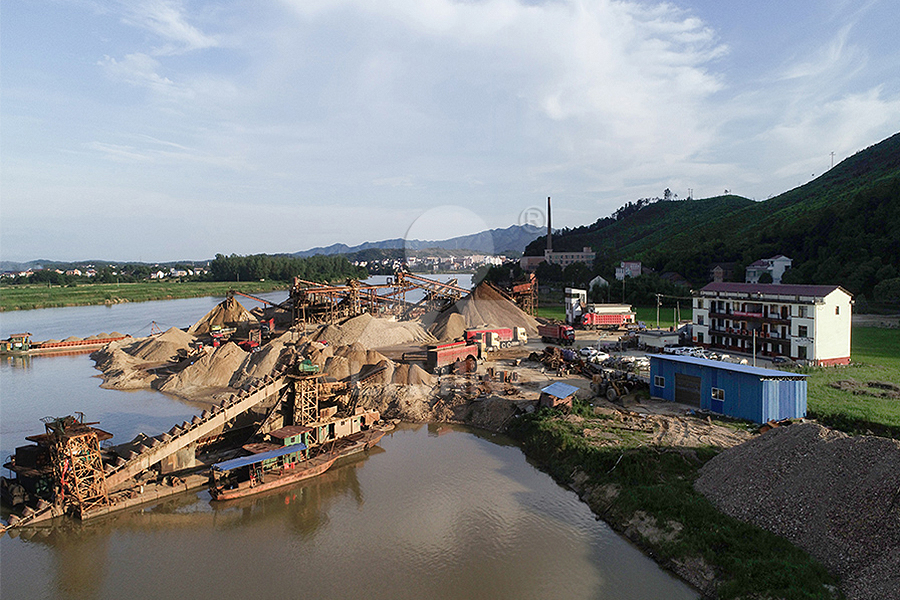Sand, which is also called concrete fine aggregate, is necessary for construction projects, and currently there are roughly four kinds in the market: Sea sand, river sand, desert sand, and mecha - nistic sand. Because river sand overexploitation causes river beds to be destroyed and river channels to be changed, it is clear that mining is forbidden, while with major engineering construction, bringing domestic sand stone needs, Many people have questions: why isn't sea sand used directly in engineering? Mechanism sand can be used instead of sea sand? And that's coming and sharing with everyone today.
1. Why cannot sea sand be used directly in engineering?
Sea sand, simply known as sand stones in the sea, is washed, tumbled, collided, struck, and honed by seawater, and as sand for construction is a " double-edged sword ", which, on its advantage, can alleviate the shortage of river sand and avoid the eco-environmental problems associated with overexploiting river sand. The disadvantages are that because chlorine ions contained in sea sand corrode the rebar, Misuse of sea sand has the potential to trigger serious engineering accidents such as' sea sand houses'. Therefore, as early as August 2004, the Ministry of Construction issued the following opinion on the management of sea sand for strict construction, with strict regulations on the processes of extraction, salt removal treatment, concrete agitation and so on.
01. Hazards of using sea sand in concrete.
Sea sand has a high salt content and is very prone to the corrosion of rebar by chloride ions.
Chloride salt crystal expansion accelerates concrete carbonization.
The shells are high in content and usually do not chemically react with cement, but these light materials are usually lamellae, the surface layer is smooth, their own compressive strength is low, they are easy to crack along the joints, and their bonding ability with cement paste is poor.
The sulfate contained in sea sand chemically reacts with carbohydrates in cement to form calcium aluminate high sulfate also known as calcvanadate, leading to volume expansion, cracks in concrete and very high impact on durability.
02 . hazards of sea sand to building rebar.
The rebar becomes thinner and thinner, the mechanical properties constantly decline, and the compressive strength and ductility are both significantly reduced.
The rebar will expand in volume after being corroded and will hold out the surrounding concrete and develop cracks, which will cause the surface concrete to fall off.
The rebar is to be anchored with concrete with the help of crescent shaped ribs on the surface of the rebar, just like the threads on the screws, the rebar is rust, the crescent thread is damaged by corrosion, the rebar becomes a smooth cylinder, and the anchoring properties are greatly reduced.

2. What sand is good for building projects?
Architectural engineering refers to the current shortage of resources and prohibition of exploitation in river sand and sea sand, through the construction of various types of housing buildings and their associated facilities, will drastically reduce the compressive strength of concrete, so what sand is good? Under the dual factors of limited resources and environmental protection, the mechanistic sand will be the main direction of building engineering development in the future.
01 . What are the major advantages of using and promoting mechanism sand.
Product advantages: source fixed, stable, mechanical, industrialized mode of production mechanism sand quality is stable, tunable and controllable.
Quality advantages: there is a high surface energy and hydrophilicity, there is a complete gradation, the amount of mud can be controlled, there are many mineral compositions, physical properties can be selected, the fineness modulus, the grain grading is relatively stable and adjustable, the grain shape can be improved.
Management advantages: there are stable legal persons, practice mining permits, have fixed operating places, and practice factory and commercialization operations.
Resource advantages: a variety of waste resources can be utilized, and the appropriate sorting and processing of the tailing, not a lot of the tailing can use the mechanism sand equipment to make artificial sand stones, which not only solves the problem of environmental pollution, but also improves the utilization rate of natural resources, and meets the requirements of cycle economy and scientific development view.
02 . mechanism what is the process flow of sand.
Mechanism sand production process processes are diverse, regardless of the size, the basic production process can generally be divided into the following stages: raw materials ->coarse crushing ->medium crushing (partially set the sieving) ->fine crushing (sand preparation, shaping) ->sieving -> cleaning ->dusting ->mechanism sand.
a. Jaw crushing machine + counter fracture machine + sand preparer + sand washer (common, soft material);
b. Jaw crushing machine + cone crushing machine + sand preparer + sand washing machine (hard material);
c. Jaw crushing machine + fine jaw crushing machine + fine crushing machine (small mechanism sand plant, low investment cost).
Mechanism sand entered the 'golden age' with policy subsidies, rising prices for finished sand, good sale, and wide application, but how should a mechanism sand factory be started? Here for everyone to recommend SMMVIK Machinery, the building plant has been self-produced and sold, specialized in producing various sand mill equipment for more than three decades, now has 200000 + users, welcome to consult and understand at any time, there are technical managers for you to answer in detail, and all of them are available on the spot and more timely, but also provide free installation, commissioning, later repair, maintenance and other services, Field trips to the plant are welcome, and there are special vehicles for free reception.









